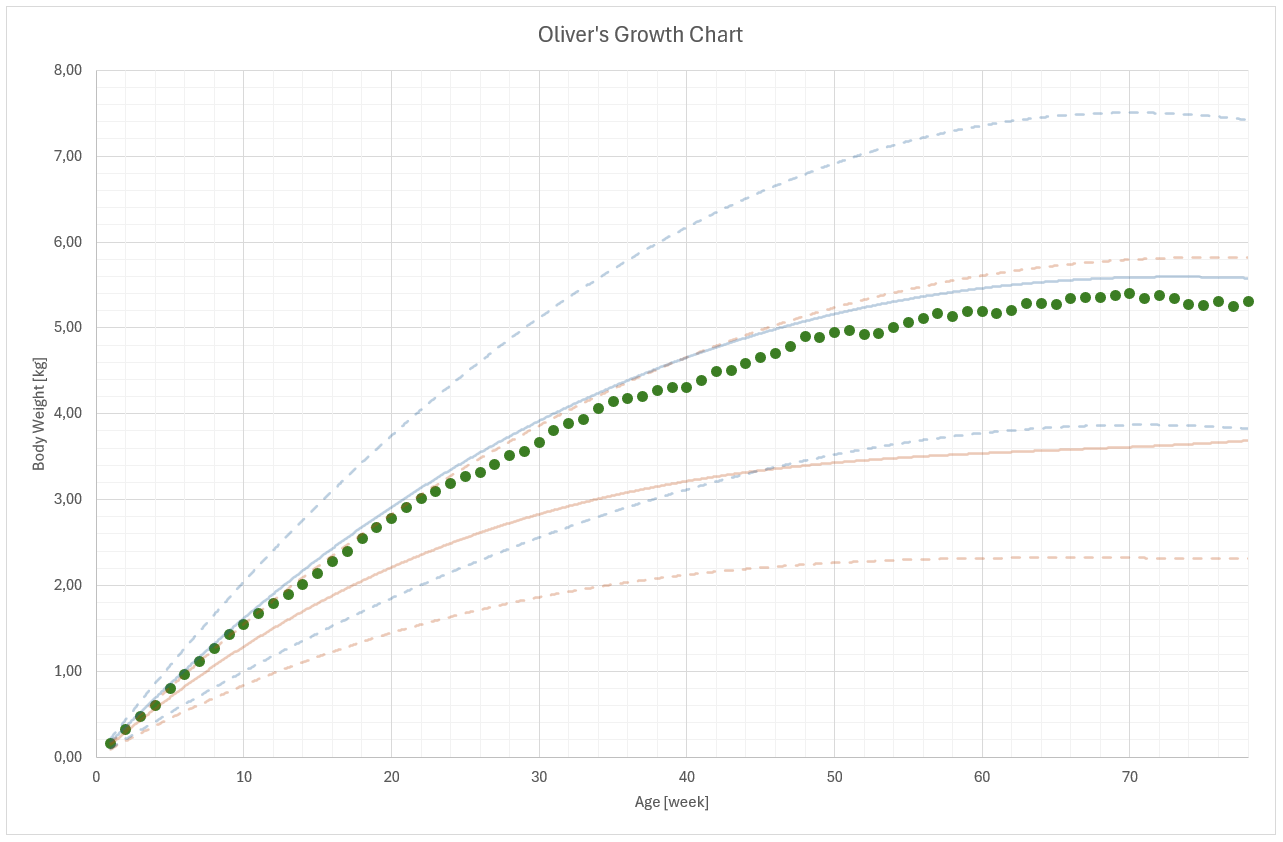A new arrival — whether a kitten or a puppy — always brings joy, excitement, and plenty of questions to a household. “Is it growing well?” “Is it too slow?” or “Maybe it’s getting a bit chubby?” Slow growth can indicate developmental issues, improper nutrition, or even serious hidden illness. Too rapid growth isn’t good either, especially for puppies — it may increase the risk of bone and joint problems and can lead to obesity later in life. Even in kittens, “faster than average” growth can result in higher body fat and obesity in adulthood.
Just like monitoring a child’s weight is important for healthy development, it’s equally useful to track the body weight of young pets. Since they grow faster, it’s best to weigh them weekly or every two weeks, always at the same time of day and preferably before feeding.
The optimal growth pattern for domestic cats has not yet been precisely defined, but growth-standard charts are now available for download (https://datacat.liverpool.ac.uk/1456/). For a detailed explanation, see the paper by Carina Salt, Alexander J. German, Kristin S. Henzel, and Richard F. Butterwick: Growth standard charts for monitoring bodyweight in intact domestic shorthair kittens from the USA (https://doi.org/10.1371/journal.pone.0277531).
Here I’m sharing an Excel sheet you can use to track your kitten’s weight.
If you like this Excel file, buy me a coffee or a tea!
On the chart, the solid blue line shows the average male kitten weight, while the dashed blue lines mark the minimum and maximum values. The orange lines represent the same for female kittens. The curves are based on the research data linked above. The data sheets are hidden and the workbook is protected, but there’s no password — you can easily remove the protection if you wish (it’s only meant to prevent accidental changes). The date, weight, and animal’s name fields can be edited without unprotecting the sheet.
It’s important to remember that the goal isn’t to be on the average line — there’s no need to be “average” here! What matters is that your pet’s weight stays within a consistent band, following a curve roughly parallel to the reference lines, without large fluctuations.
These curves are not strict rules — individual factors such as breed, genetics, environment, and nutrition all play a role. If you notice sudden changes within a week or two, it’s best to consult a veterinarian. Likewise, if your pet’s weight seems to increase or decrease more quickly than expected from the charts, that’s also worth checking.
Always pay attention to individual differences — and when in doubt, ask your vet for advice!

